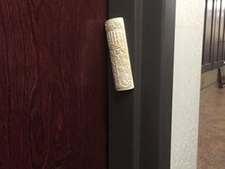 *Asked & Answered
*Asked & Answered
Asked – Is there any way to collect a fine other than going to court?
Answered – Monetary penalties (i.e., fines) are just one of the many tools in a homeowners association’s (“HOA’s”) arsenal to enforce its governing documents. They are primarily used to deter violations, as well as to compel compliance from a member, guest or tenant who is in violation. However, many HOAs find fines ineffective at deterring violations because of the difficulty in collecting the fines once levied.
Indeed, when a member fails to pay regular or special assessments levied by the HOA in a timely fashion, the HOA may record an assessment lien against the member’s separate interest to act as security for the payment of the assessment debt. The HOA then has the power to enforce the lien through, among other methods, foreclosure. Unfortunately, the HOA’s ability to collect delinquent assessments through foreclosure does not extend to the collection of fines:
A monetary penalty imposed by the association as a disciplinary measure for failure of a member to comply with the governing documents, except for the late payments, may not be characterized nor treated in the governing documents as an assessment that may become a lien against the member’s separate interest enforceable by the sale of the interest [through nonjudicial foreclosure].
Accordingly, an HOA is limited to the following methods to collect fines: (1) bring a lawsuit against the member (typically in small claims court unless the amount of the fine(s) exceed(s) the jurisdictional limits imposed under the California Code of Civil Procedure), or (2) wait until the member’s separate interest is sold and make a demand during escrow. Neither situation is ideal because of issues inherent with each.
For example, judicial action can be a costly and time-consuming endeavor. If the HOA prevails, debtors rarely pay judgments entered against them. Thus, it will take time (and money) to secure payment, either through a wage garnishment or bank levy. Moreover, failure to strictly adhere to the HOA’s Notice and Hearing procedure, along with its Enforcement Policy and Fine Schedule, will preclude the HOA from prevailing in an action to collect fines.
With respect to the latter option (wait until the member sells his or her separate interest), there is no guarantee that the debt will be satisfied through escrow. That is because the debt is not secured by the property. As a result, if the debt is not satisfied through escrow, the HOA will be forced to bring a lawsuit against the now-former member.
| As noted above, the purpose of levying a fine against a member is to encourage compliance with the HOA’s governing documents. If the fine works (i.e., the member complies after being fined), the HOA should consider reversing the fine as its objective has been achieved. However, if the fine does not work (i.e., the member continues to violate the governing documents), the HOA should bring an action to enforce the governing documents. Through said action the HOA may seek to collect the fine(s), but its primary objective should be to secure compliance. |
-Blog post authored by TLG Attorney, Matthew T, Plaxton, Esq.
 HOA Lawyer Blog
HOA Lawyer Blog


 Homeowners associations (“HOAs”) are governed by a group of volunteer members known as a “
Homeowners associations (“HOAs”) are governed by a group of volunteer members known as a “ One of the many benefits of living in a homeowners association (“HOA”) is the amenities provided to its residents. Common amenities include recreational rooms, pools, and fitness facilities. One amenity gaining in popularity is designated for the community’s canine companions: dog parks. Dog parks provide dogs with a designated off-leash area where they can run, exercise and play while minimizing damage to other common areas. However, having such an amenity could increase a HOA’s liability exposure, especially if the dog park is not designed properly and the HOA does not have
One of the many benefits of living in a homeowners association (“HOA”) is the amenities provided to its residents. Common amenities include recreational rooms, pools, and fitness facilities. One amenity gaining in popularity is designated for the community’s canine companions: dog parks. Dog parks provide dogs with a designated off-leash area where they can run, exercise and play while minimizing damage to other common areas. However, having such an amenity could increase a HOA’s liability exposure, especially if the dog park is not designed properly and the HOA does not have  Like it or not, we live in the age of social media. It is undeniable and has dramatically transformed the way we communicate in every arena, including homeowners associations (“HOA”). Information, opinions and images are broadcast and circulated at a rapid pace with little or no oversight involved. These unfiltered transmissions over social media airwaves can have profound impacts on homeowners associations’ governance (
Like it or not, we live in the age of social media. It is undeniable and has dramatically transformed the way we communicate in every arena, including homeowners associations (“HOA”). Information, opinions and images are broadcast and circulated at a rapid pace with little or no oversight involved. These unfiltered transmissions over social media airwaves can have profound impacts on homeowners associations’ governance ( *New Legislation
*New Legislation *Asked & Answered
*Asked & Answered *New Legislation
*New Legislation As security technology becomes less expensive and more accessible to average consumers, homeowners are provided with an exponential increase in available options for exterior security devices. A cursory Amazon search reveals hundreds of such devices including motion sensor lights and home camera offerings that can be accessed remotely from the convenience of one’s smart phone. Given the benefits and low cost, many homeowners have installed security systems in and around their residences to mitigate the risk of theft, property damage, and other criminal activity. As purchases and installations of these devices increase, associations and
As security technology becomes less expensive and more accessible to average consumers, homeowners are provided with an exponential increase in available options for exterior security devices. A cursory Amazon search reveals hundreds of such devices including motion sensor lights and home camera offerings that can be accessed remotely from the convenience of one’s smart phone. Given the benefits and low cost, many homeowners have installed security systems in and around their residences to mitigate the risk of theft, property damage, and other criminal activity. As purchases and installations of these devices increase, associations and  *Unpublished Opinion
*Unpublished Opinion *Asked & Answered
*Asked & Answered